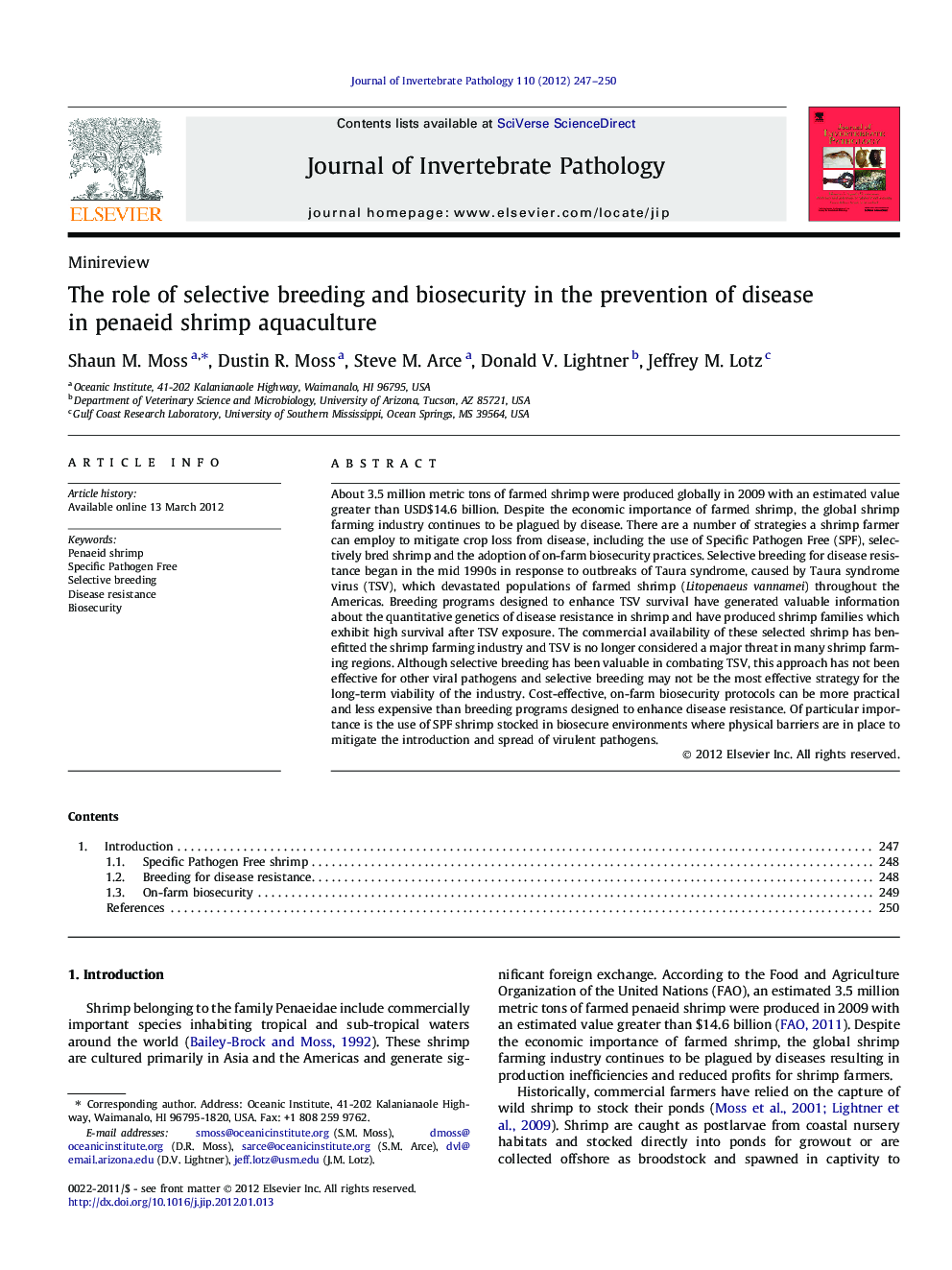| Article ID | Journal | Published Year | Pages | File Type |
|---|---|---|---|---|
| 4557908 | Journal of Invertebrate Pathology | 2012 | 4 Pages |
About 3.5 million metric tons of farmed shrimp were produced globally in 2009 with an estimated value greater than USD$14.6 billion. Despite the economic importance of farmed shrimp, the global shrimp farming industry continues to be plagued by disease. There are a number of strategies a shrimp farmer can employ to mitigate crop loss from disease, including the use of Specific Pathogen Free (SPF), selectively bred shrimp and the adoption of on-farm biosecurity practices. Selective breeding for disease resistance began in the mid 1990s in response to outbreaks of Taura syndrome, caused by Taura syndrome virus (TSV), which devastated populations of farmed shrimp (Litopenaeus vannamei) throughout the Americas. Breeding programs designed to enhance TSV survival have generated valuable information about the quantitative genetics of disease resistance in shrimp and have produced shrimp families which exhibit high survival after TSV exposure. The commercial availability of these selected shrimp has benefitted the shrimp farming industry and TSV is no longer considered a major threat in many shrimp farming regions. Although selective breeding has been valuable in combating TSV, this approach has not been effective for other viral pathogens and selective breeding may not be the most effective strategy for the long-term viability of the industry. Cost-effective, on-farm biosecurity protocols can be more practical and less expensive than breeding programs designed to enhance disease resistance. Of particular importance is the use of SPF shrimp stocked in biosecure environments where physical barriers are in place to mitigate the introduction and spread of virulent pathogens.
Graphical abstractFigure optionsDownload full-size imageDownload as PowerPoint slideHighlights► Disease status of shrimp can be controlled using Specific Pathogen Free stocks. ► Selective breeding can improve TSV resistance in shrimp. ► Biofloc technology provides cost-effective biosecurity on shrimp farms.
